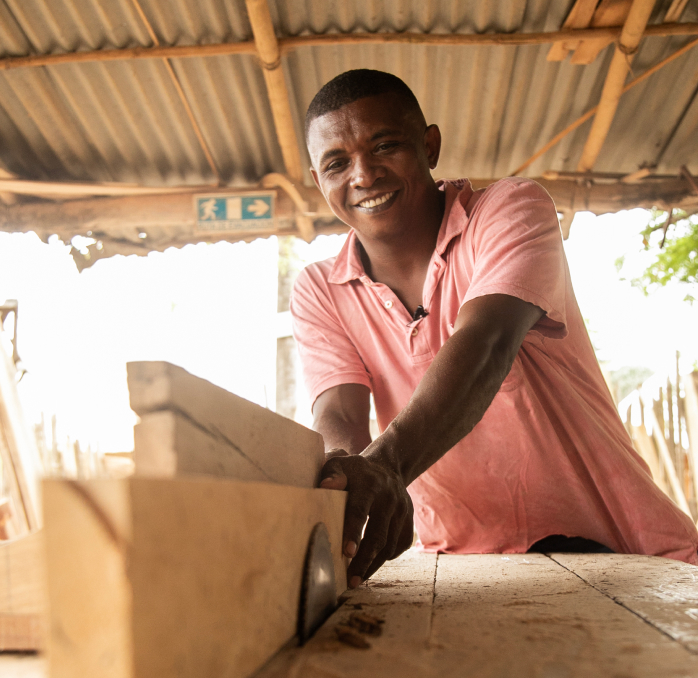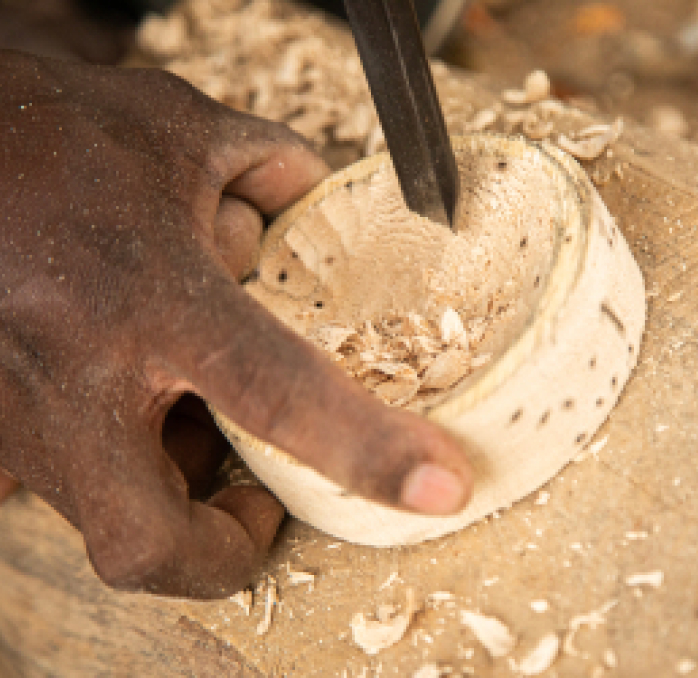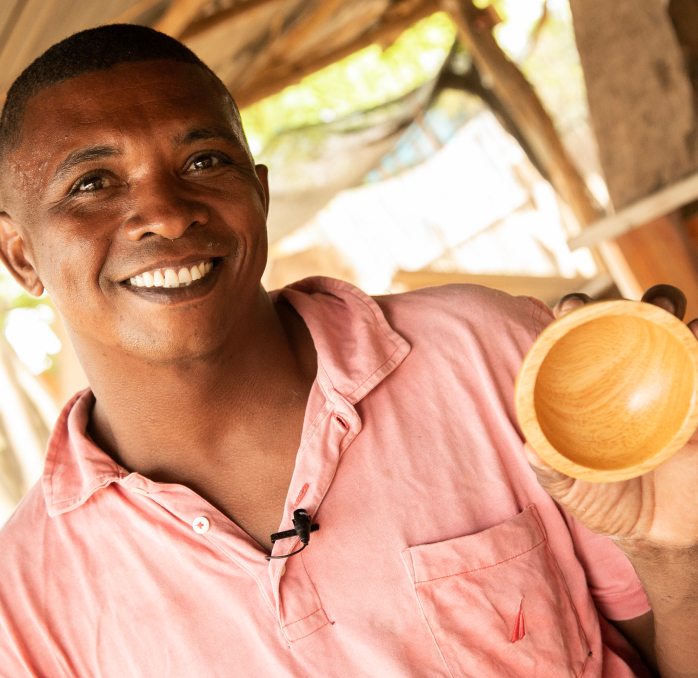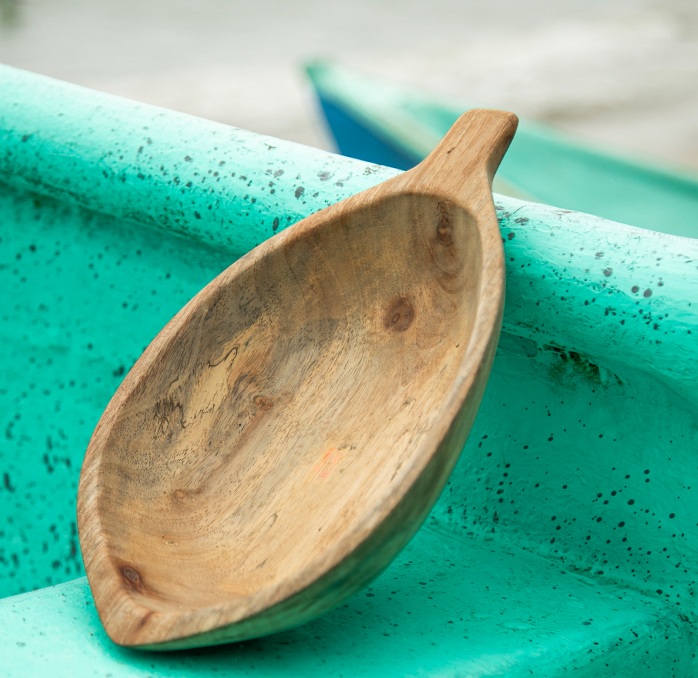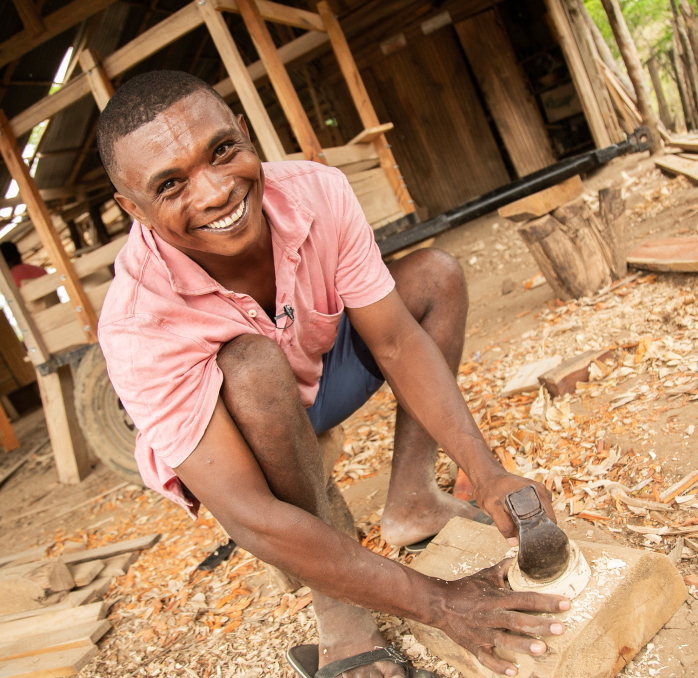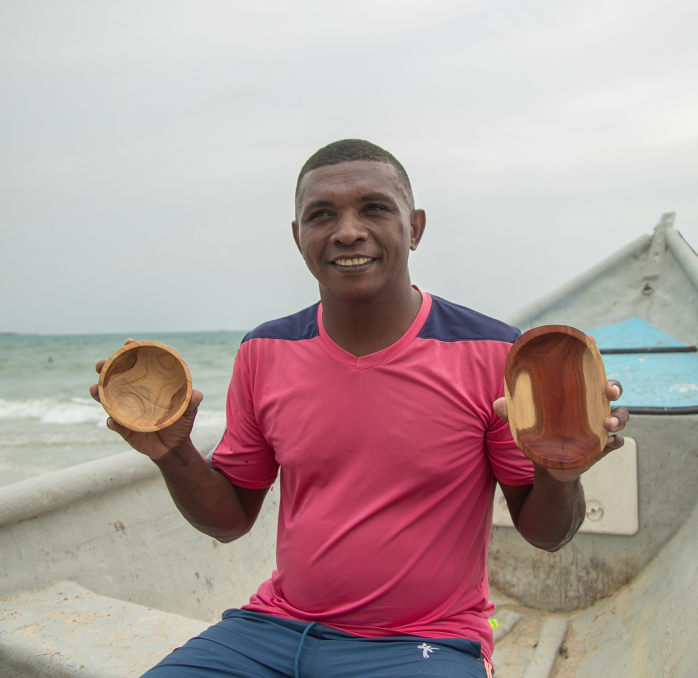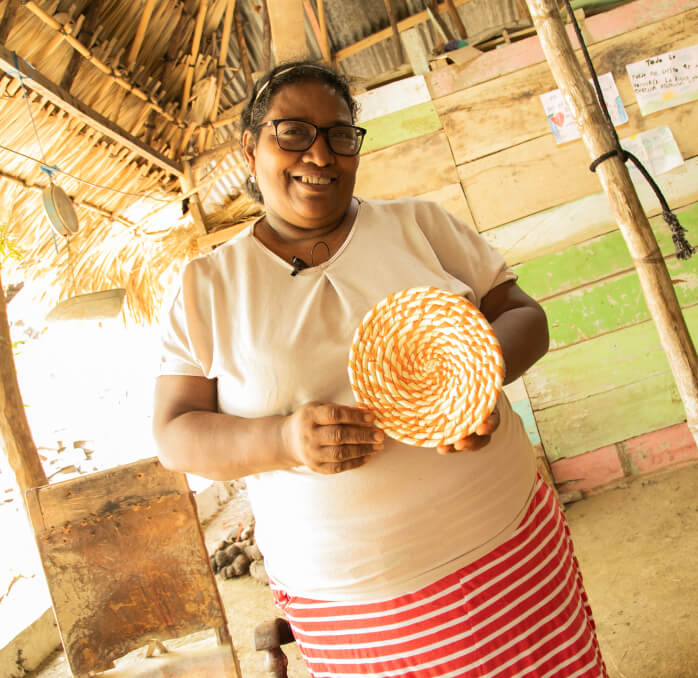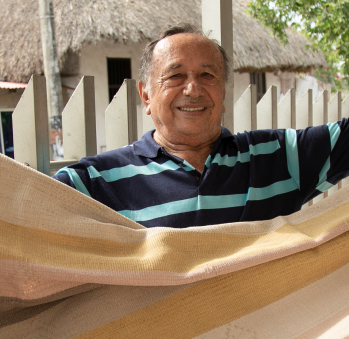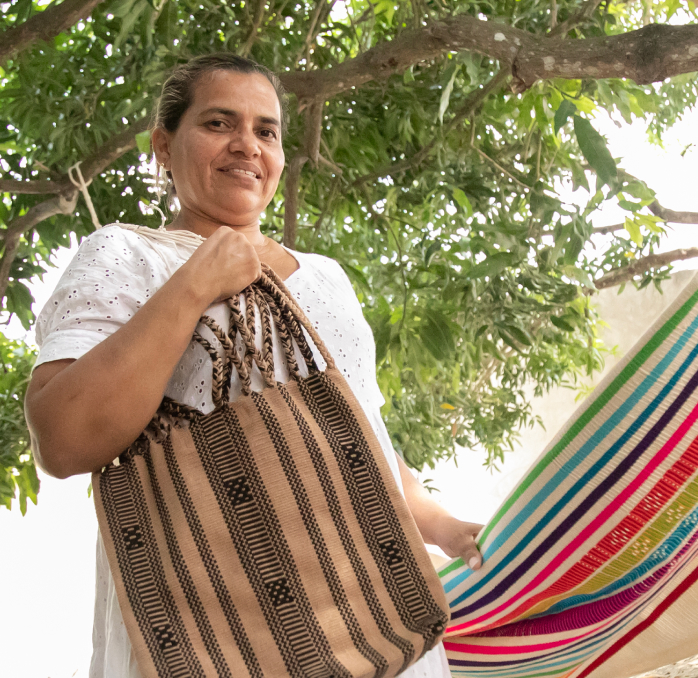Carmelo Castillo
Workshop: Ardehigue
Craft: Trabajos en madera
Trail: Sucre Route
Location: San Onofre, Sucre
Carmelo Castillo Ruiz believes that his gift was awaiting him, and it was only when he had exhausted all other options that God revealed it to him. He had taken courses with the Agriculture Ministry and the Fondo Mixto de la Cultura, and he felt that his journey through life would remain anonymous until, through a process of trial and error, he discovered wood carving. For as long as he can recall, wood and vine carvers have always existed in his hometown, San Onofre. However, he didn’t learn the craft from his family but rather through a training course conducted by Artesanías de Colombia when he was twenty-eight years old. Now, in his forties, when he speaks about his craft, a deep love shines through his eyes.
As the day begins, he’s already thinking of the tools he’ll use and the place he’ll occupy in his workshop. He wakes up, showers, brushes his hair, and enjoys a cup of coffee from a carved cup made of colorado wood. He’s a member of ARDEHIGUE, an organization where he has worked alongside 17 other individuals since 2011. Together, they’ve participated in various fairs, including Expoartesanías in Bogotá, showcasing their creations. While the collective manufactures furniture, beds, and doors, Carmelo’s focus lies in decorative crafts like kitchen and table utensils. He works with ceiba tolúa, teak, and colorado wood—distinctive for its vibrant orange grain. People in his town know he is a craftsman and notify him whenever a tree falls on nearby properties, and he chainsaws the wood into the sizes he needs before transporting it to his workshop using a tractor. There, he employs tools like the saw, edgebander, and planer to shape the wood, and he traces designs using stencils. Subsequently, he marks the core with a chainsaw and carves it using a chisel.
He explains that it’s the nature surrounding him that serves as his inspiration—the means. Sometimes, a leaf, animal, or insect might appear before him during his walk from home to the workshop. This marks the beginning of the creative challenge as he figures out how to capture what he’s seen using a piece of wood as his canvas. He carries cardboard with him everywhere, sketching until he reaches the perfect design. He’s gained recognition for his bowls with vine weaved along the edges. These bowls were co-designed with Artesanías de Colombia as part of the Orígenes project. The same vine was traditionally used in San Onofre for crafting the “”balay,”” a woven basket employed for sorting rice—a tradition that Carmelo continues, cultivating his own rice. Additionally, he grows sesame, corn, beans, and local tubers like yuca and ñame. Though now, rice milling machines are used for this task.
Continuing to use the vine, he added it to the edges of his turtle-shaped bowls. These bowls are a testament to Carmelo’s dedication to accurately portraying the animals that surround him. He realized that his wooden turtles were missing a pair of eyes that truly resemble the natural ones. After experimenting with various techniques such as embedding “”chuchimba”” seeds, pyrography, and encrusting tiny wood pieces, none seemed satisfactory. His last option involved embedding a pair of plastic black beads, which finally provided the precise size, pupil, and iris he sought.
Listening to him speak about his emotional connection to his craft and the satisfaction it brings is moving. He describes it as “”something that inspires love, like letting all the love you feel melt and pour into something; it’s like opening yourself and surrendering.”” Every morning, he places his trust in his craft as he drinks coffee from the wooden cups he personally carved. He knows when a piece is well-crafted because it evokes feelings of joy and gratitude within him, which he illustrates by placing an open palm on his chest. This satisfaction undoubtedly resonates in each of his wooden vessels, finished with a touch of beeswax or olive oil.
Craft
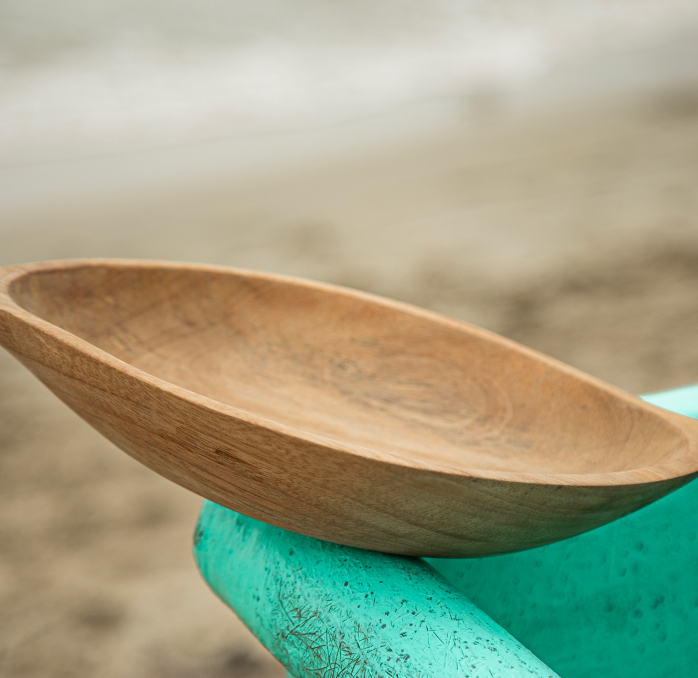
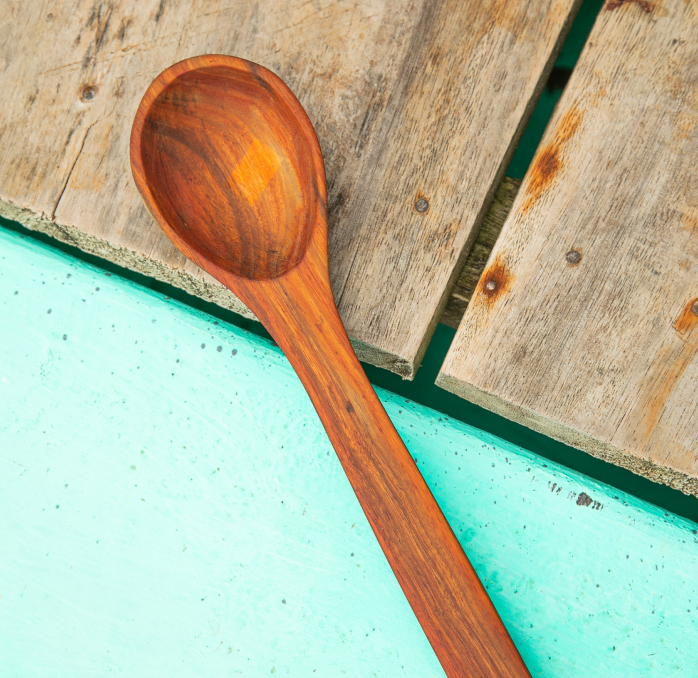
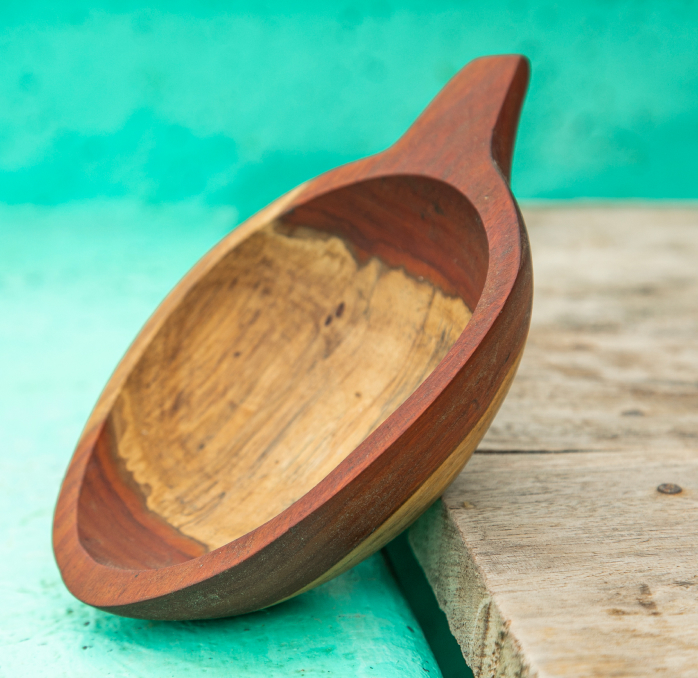

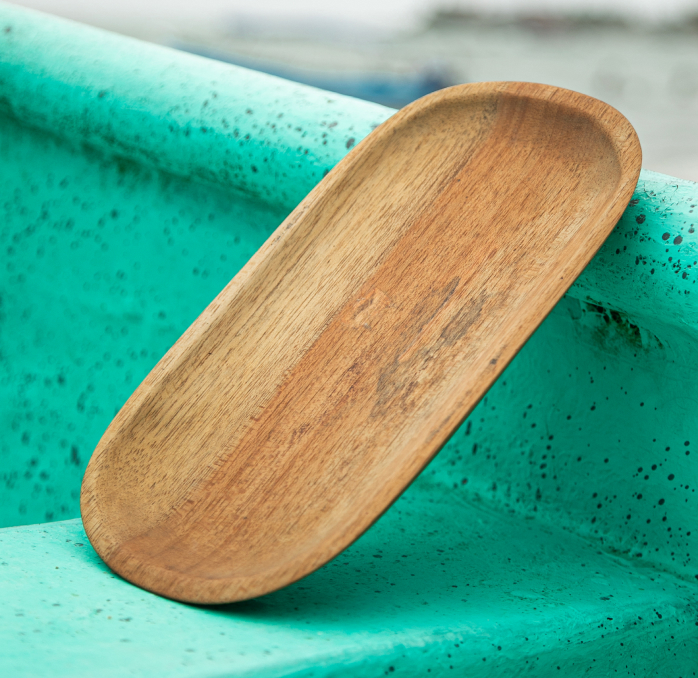

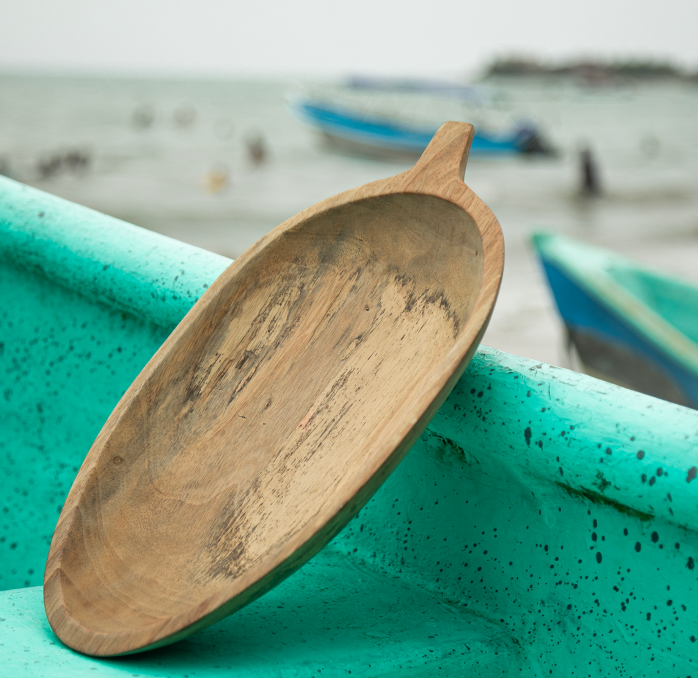







Artisans along the way
Artisans along the way
No puede copiar contenido de esta página








































